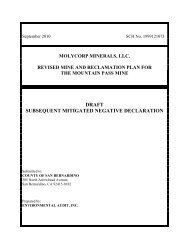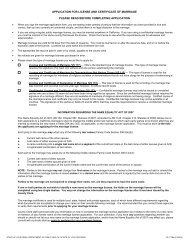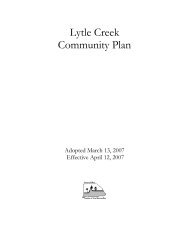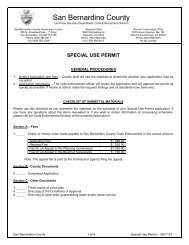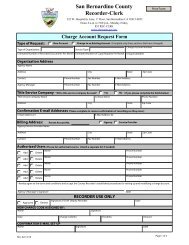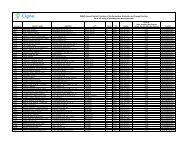textiles and fashions, 1860s—1960s A fashion timeline
textiles and fashions, 1860s—1960s A fashion timeline
textiles and fashions, 1860s—1960s A fashion timeline
Create successful ePaper yourself
Turn your PDF publications into a flip-book with our unique Google optimized e-Paper software.
A textile <strong>timeline</strong> (continued)<br />
1900s—Women. The <strong>fashion</strong> was for mature, sophisticated, well-bred ladies wearing flowing,<br />
organic forms that reflected the Art Nouveau style. Long full skirts gradually became narrower<br />
<strong>and</strong> shorter, eventually forming “hobble skirts” <strong>and</strong> offering glimpses of ankles. Haute couture<br />
fluorished in Paris <strong>and</strong> was sought after by the wealthy. The start of World War I in 1914<br />
brought a temporary end to <strong>fashion</strong> developments <strong>and</strong>, at the same time, introduced women<br />
to a much greater degree of freedom as they stepped into jobs once held by men who were<br />
now on the battlefields.<br />
1920s—Women began to liberate themselves from constricting clothing <strong>and</strong> undergarments<br />
<strong>and</strong> embraced more comfortable styles like pants <strong>and</strong> short skirts, although <strong>fashion</strong> remained<br />
conservative until about 1925. Then, revolutionary styles of the flapper era emphasized youth,<br />
hems rose to the knee, <strong>and</strong> waistlines disappeared.<br />
1930s—Women. Fashion became more conservative during the Great Depression. Skirts became<br />
longer <strong>and</strong> the waistline returned. Metallic lamé <strong>and</strong> rayon were glamorous evening fabrics,<br />
although <strong>fashion</strong> designers still preferred silk.<br />
1940s—Women. War once again influenced <strong>fashion</strong>, with cloth rationing <strong>and</strong> a restrained mood<br />
leading to drabness <strong>and</strong> uniformity. People “made do” by mending <strong>and</strong> repurposing clothing<br />
they already had. Rationing led to shorter skirts <strong>and</strong> boxy jackets; a maximum of three buttons<br />
per item of clothing was allowed. Nylon was scarce <strong>and</strong> women were encouraged to wear<br />
ankle socks with bare legs.<br />
1950s—Women. The “new look” at the end of World War II carried through the 1950s, with a<br />
return to luxurious fabrics, rounded shoulders, longer full skirts, <strong>and</strong> narrow waists, worn with<br />
ornate accessories. Hemlines changed every year, building obsolescence into mass-produced<br />
<strong>and</strong> couturier <strong>fashion</strong> typified by Christian Dior. The return of Coco Chanel offered elegant<br />
stability, but Paris was losing its premier <strong>fashion</strong> position as the first boutiques were created<br />
<strong>and</strong> Mary Quant designed her “Chelsea look.”<br />
1960s—Women. The decade was marked by a shift to ready-to-wear <strong>and</strong> an emphasis on<br />
youth <strong>and</strong> relatively cheap, throw-away <strong>fashion</strong> typified by “Swinging London.” Short skirts<br />
prevailed, although the maxi was introduced by Yves Saint Laurent at the end of the decade<br />
along with geometric sheaths, Pop Art <strong>fashion</strong>, <strong>and</strong> see-through blouses <strong>and</strong> dresses. The<br />
concept of “unisex” clothing was introduced by 1967, although women were more likely to<br />
wear pants suits than men were to don skirts.




